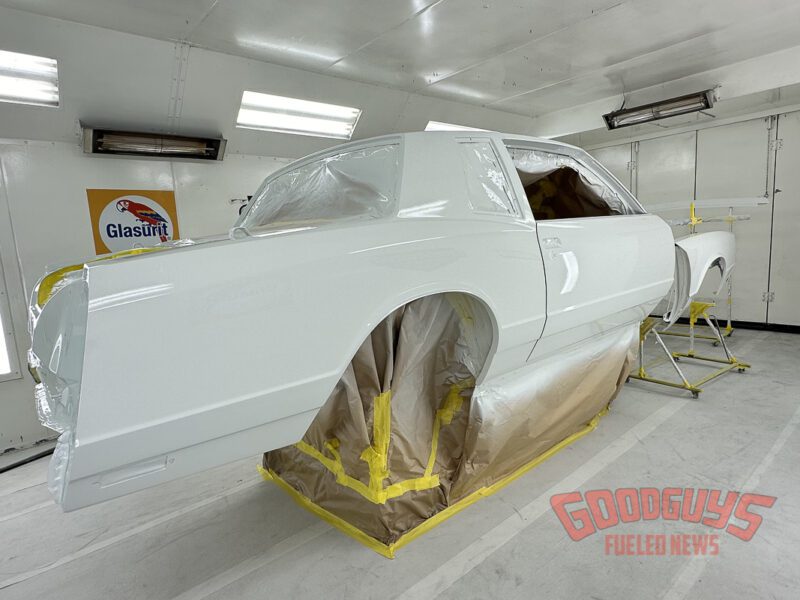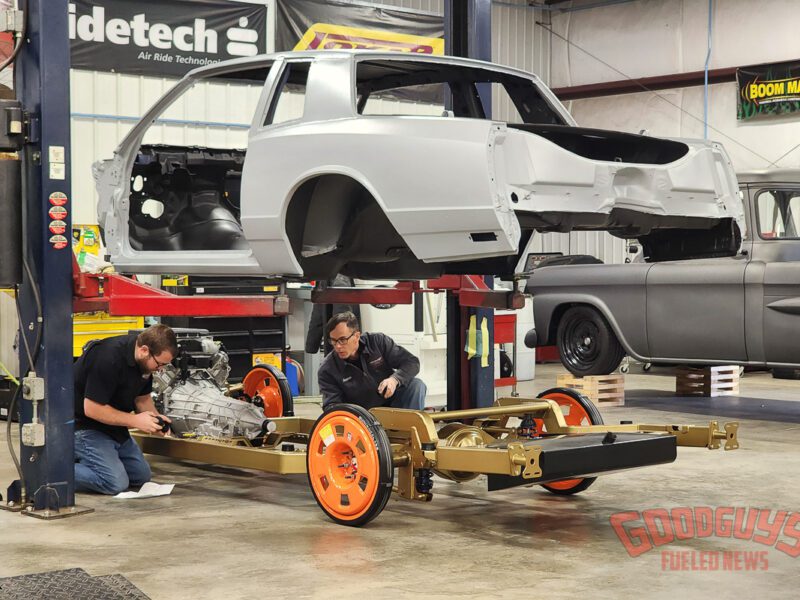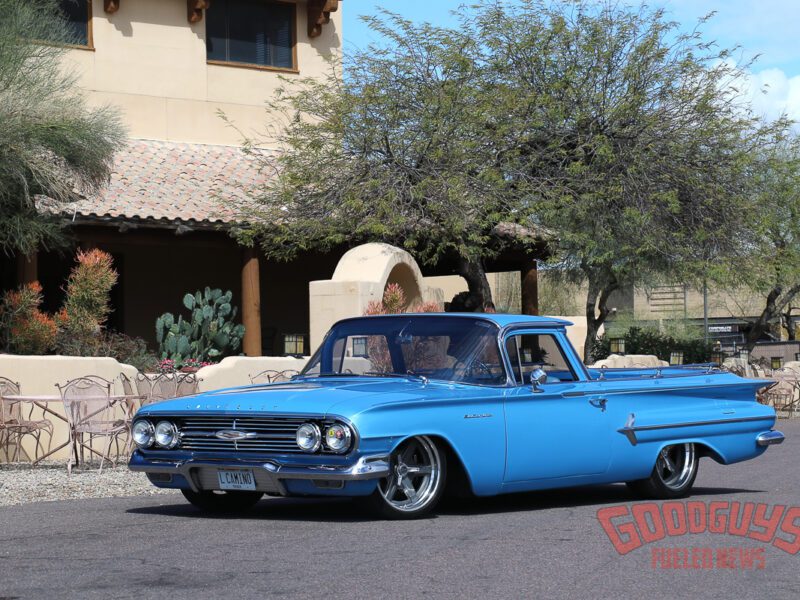Retro Rumblings – Benchmarks
Over the last three decades, three cars stand out that pushed the envelope of style and substance. These are vehicles that took hot rodding to the next level. It happens a lot in this scene. We’re cruising along with incredibly cool machines then BAM – somebody builds a piece of rolling art the likes of which we’ve never seen, a car that makes us all see things a little differently. These benchmark cars tend to seamlessly blend technology with innovation, craftsmanship, design, and performance.
Truth is, there are way more than three vehicles that have set benchmarks in recent decades. These three really shifted the scene, though. You could call them legacy cars.
Chezoom
On the heels of CadZZilla, Boyd Coddington’s Chezoom upped the ante for modern street customs. Prior to its debut at the 1992 SEMA Show, nobody had modified a ’57 Chevy quite like this. Commissioned by Mr. Gasket founder Joe Hrudka, Chezoom set a new standard for Tri-fives. The clean-sheet concept came from the pen of Thom Taylor. The car featured a LT1 Vette motor at a time when modern engine swaps weren’t nearly as prevalent as they are now. Add in Corvette suspension and a custom tubular frame and it had the underpinnings of a corner-carver.
The amount of metal fab was enormous. Just 10-percent of the original sheet metal was used as a starting point. The team at Coddington’s shop chopped the lid, reshaped all the panels, and exaggerated the iconic ’57 Chevy lines to create a killer, boundary-pushing custom. Once the fab and finally assembly were complete, the car was blown apart and painted what Boyd called “Peacock Teal.”
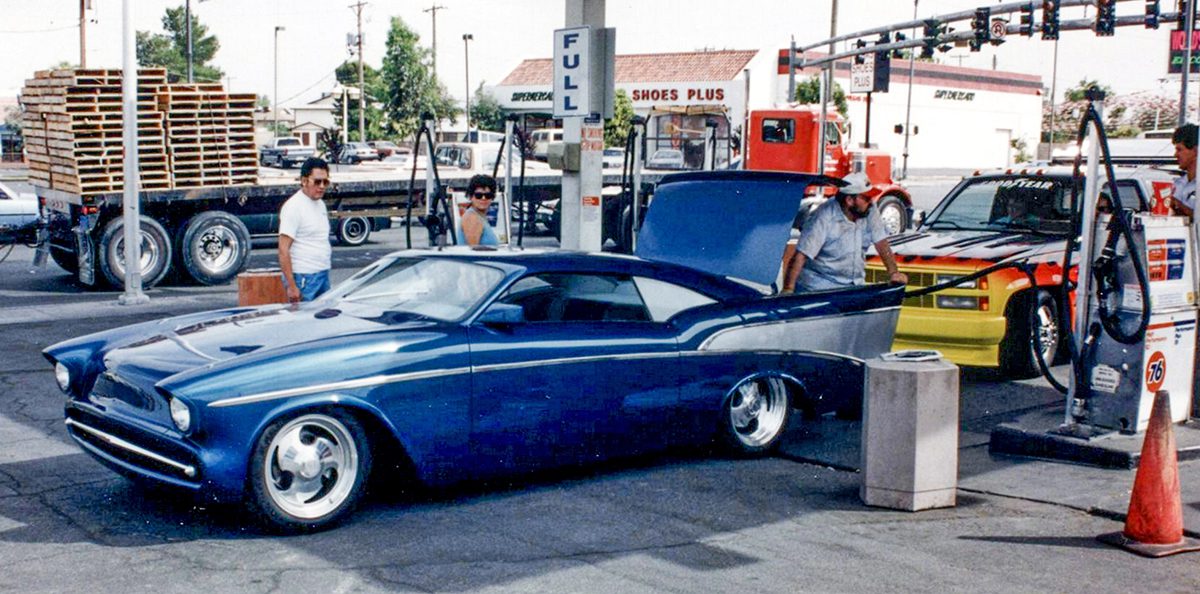
The interior was so out there it looked like a combination of Ferrari meets the Jetsons. The seats were the most unique feature, with radically designed seat backs in a triple halo pattern. They must have been comfortable because true to form, Boyd and his son Chris hopped in it and drove it from Boyd’s shop all the way to the Goodguys Indy Hot Rod Nationals. They drove it hard, too, and it performed like a champ. All show and all go, just like it should be.
The car was certainly unique, and you could argue it was a precursor to the pro touring movement. It was elegant but with its nimble suspension and late model drivetrain, it had the essentials of today’s track beasts. Chezoom sold at auction in 2015 for $352,000.
Grand Master
A decade after Chezoom came Wes Rydell’s Grand Master – the 2002 Ridler Award winner which also collected the 2002 Goodguys Street Rod d’Elegance and our Street Rod of the Year title. Never has a ’30s Chevy ever taken on a profile quite like this brilliant bowtie.

Designed and assembled by Foose Design, the ’35 Chevy Master sedan underwent a masterful transformation. Rydell Toy Shop stalwart Doug Peterson did the lion’s share of the metalwork (an estimated 22,000 man hours over five years) under the watchful eye of Foose, who managed the project from afar. A-pillars, B-pillars, wheel openings, and more were altered and massaged to turn a mundane and bulbous prewar production sedan into rolling art. The body was completely tailored and hand crafted from steel. Only parts of the fenders and small portions of the roof remained from the original car. A precise 1/8-inch body gap can be found between every body panel, including the underbody details. The frame was sanded, painted, and polished as smooth as the exterior. Fastener holes were blind-drilled and tapped so that no nuts dirtied up the backside of a part.
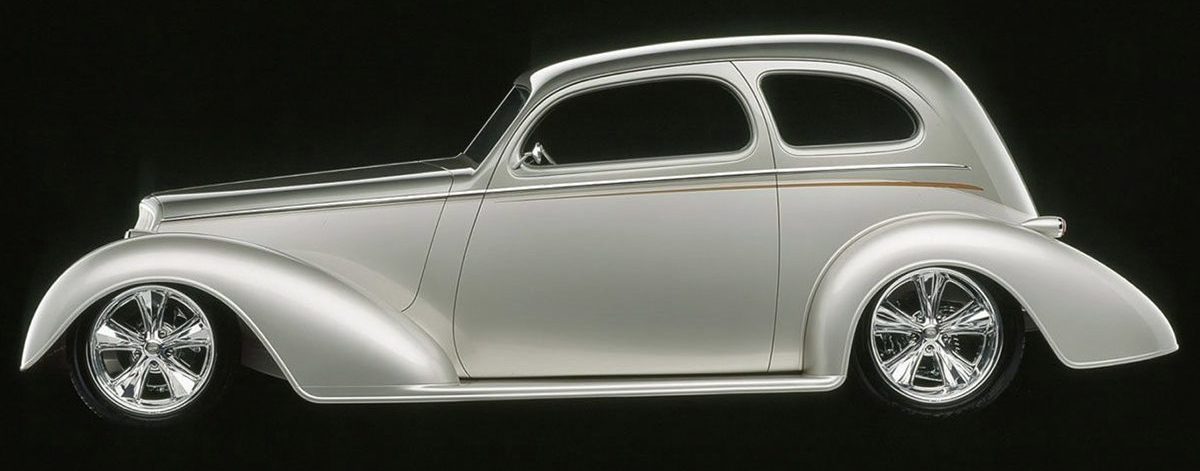 Since the mid-’80s, Rydell’s own “Toy Shop” has employed painter Tommy Marcotte. He’s one of the best-kept secrets in hot rodding and he laid down the BASF Millennium Jade and Chip Silver with orange and pearl accents. With a late-model Corvette LT4 Grand Sport V8, one-off wheels and a stance to die for, the Grand Master shaped the next decade of high-end street rods.
Since the mid-’80s, Rydell’s own “Toy Shop” has employed painter Tommy Marcotte. He’s one of the best-kept secrets in hot rodding and he laid down the BASF Millennium Jade and Chip Silver with orange and pearl accents. With a late-model Corvette LT4 Grand Sport V8, one-off wheels and a stance to die for, the Grand Master shaped the next decade of high-end street rods.
C1RS
Just as we were about to enter the second decade of the new Millennium, Barry Blomquist’s C1RS floored everyone at the Goodguys 2009 PPG Nationals in Columbus. Up to that point Detroit Speed, Troy Trepanier, Ringbrothers, Bobby Alloway, and Steve Strope garnered most of the headlines for the burgeoning modern street machine movement. Roadster Shop’s Phil and Jeremy Gerber blasted right through the barrier and set the stage for a whole new ballgame with this ’62 Corvette, which served as a launch platform for RS’s new C1 chassis line.
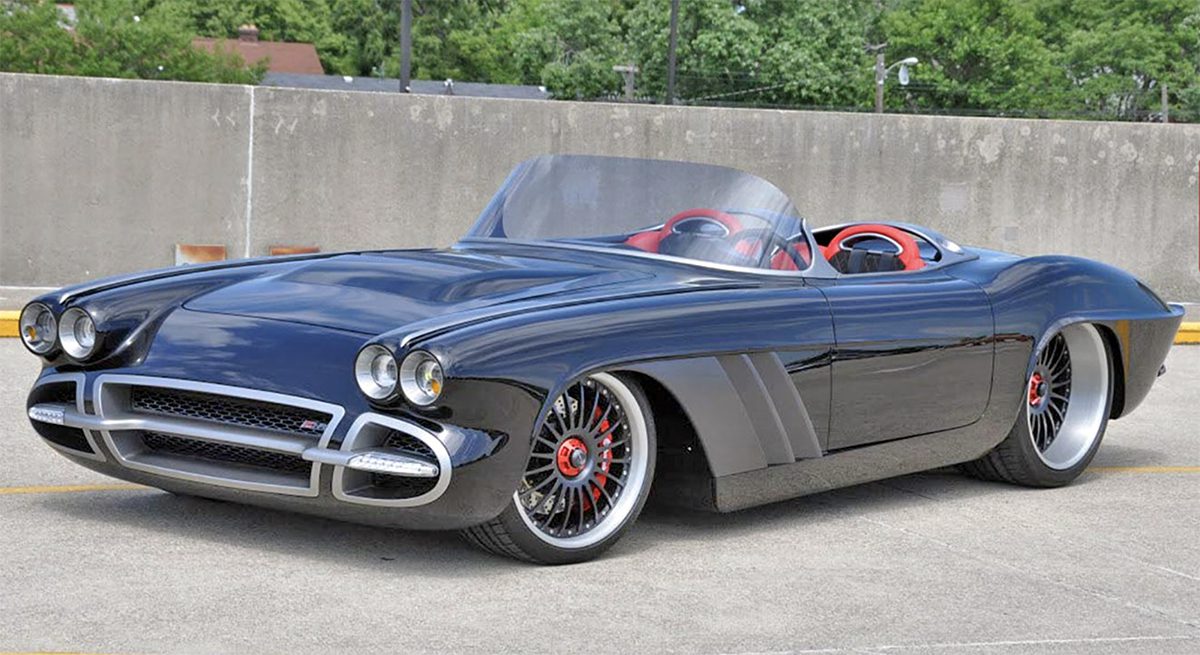
Designed by Eric Brockmeyer, the fit and finish, intricate machined parts, and extensive one-off details on Blomquist’s roadster were on a different level. As today’s kids would say, “it hit different.” Consider its spindle-mounted multi-spoke Forgeline wheels, ground-hugging profile, and spectacular interior with Ferrari red leather, Alcantara accents, and a liberal dose of carbon fiber which was just starting to come into vogue.
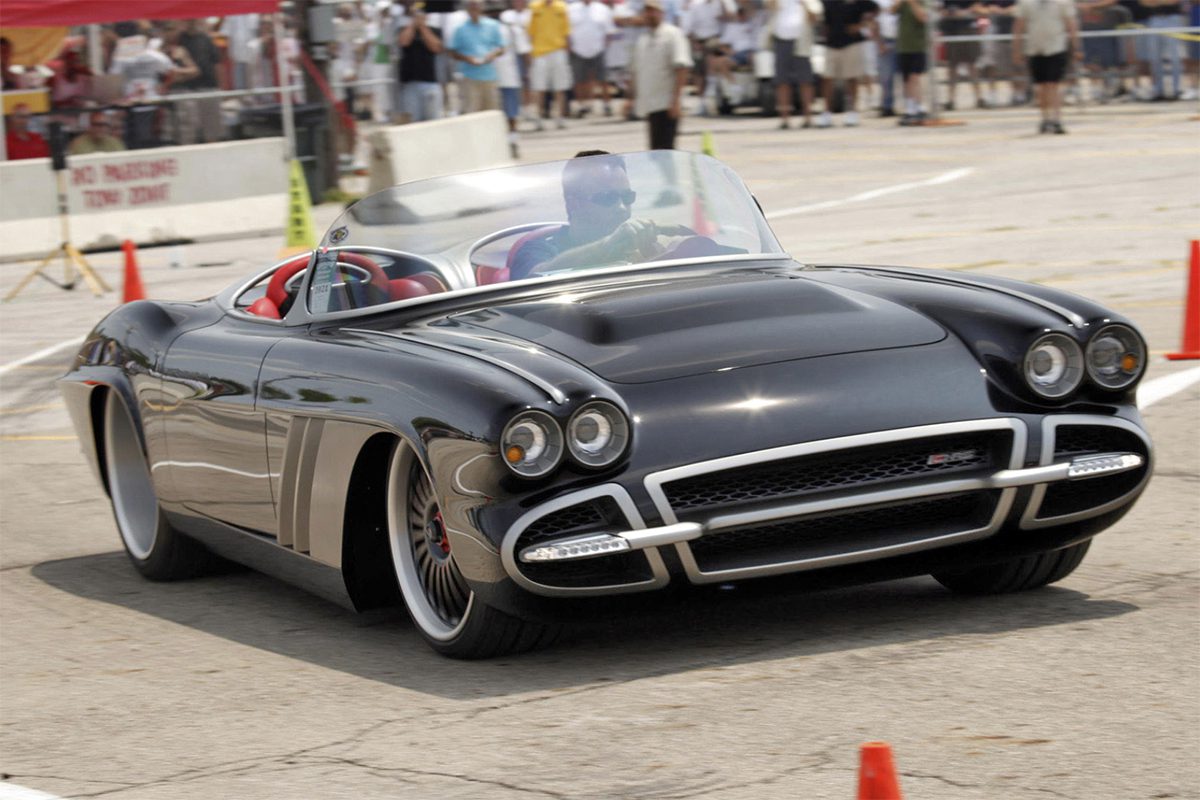 The entire front end was custom formed from sheet aluminum, including all grilles, grille surrounds, and the front bumpers. One-off headlights with billet trim rings, carbon fiber side louvers, a recessed cove, and a completely restyled rear end were all part of the custom recipe.
The entire front end was custom formed from sheet aluminum, including all grilles, grille surrounds, and the front bumpers. One-off headlights with billet trim rings, carbon fiber side louvers, a recessed cove, and a completely restyled rear end were all part of the custom recipe.
Then it got out on the AutoCross track and blitzed everyone by nearly a tenth of a second. The 600-plus horsepower LS7 thundered like a race car. When C1RS left the show grounds Sunday evening, a new era for street machines had begun.
Speaking of new eras, as we work our way toward the mid-2020s, I have to wonder what the next benchmark cars will be. If the past is any guide, you can be certain that hot rod builders are already exploring new ways to push the boundaries of design, style, and performance.



